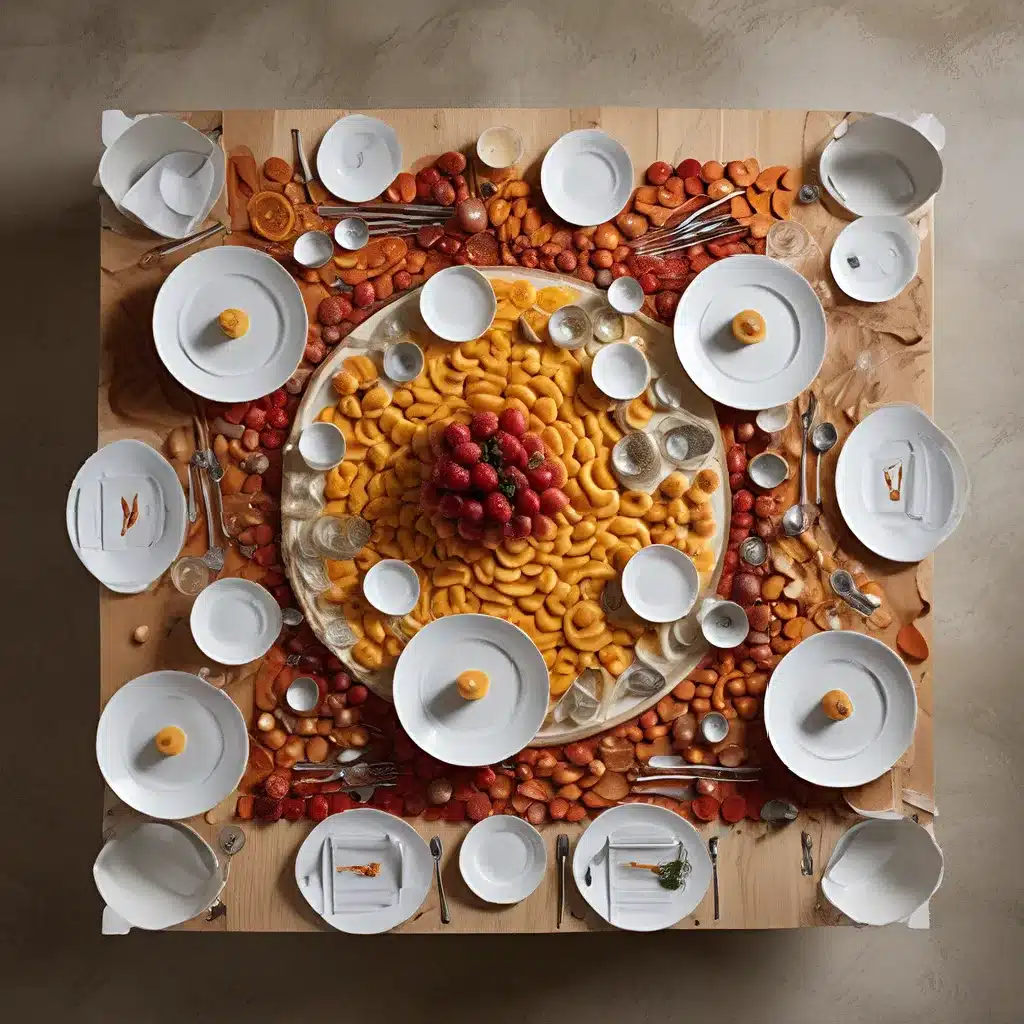
As a self-proclaimed foodie and avid home cook, I’ve always been captivated by the parallels between culinary arts and other creative disciplines. I mean, think about it – the way we combine flavors, textures, and colors to craft a visually stunning and gastronomically delightful dish is not all that different from how a painter blends pigments on a canvas or a sculptor shapes clay into an awe-inspiring form.
In fact, some of the most renowned chefs in the world are increasingly being recognized as true artists in their own right. Take Marcus Samuelsson, the acclaimed chef-owner of Red Rooster Harlem, for instance. As I learned from the Newcity Resto article, Samuelsson was invited to speak at MoMA’s “Talk to Me” symposium, where he discussed how he designs his restaurant’s menu to reflect the diversity of the Harlem community – seamlessly blending soul food, Dominican cuisine, and nods to his own Swedish heritage. Isn’t that just as much an artistic expression as a painter depicting the vibrant culture of their neighborhood?
And let’s not forget about the rise of molecular gastronomy – a culinary movement that applies scientific principles to cooking in order to create truly awe-inspiring, almost otherworldly dishes. As the Newcity Resto piece describes, at restaurants like Chicago’s Moto, diners may be served a “deconstructed reconstructed avocado” or asked to don a “smoked glove” to eat a chocolate dish, blurring the lines between food and avant-garde art.
From the Palate to the Palette: Food as a Creative Medium
But it’s not just the plating and presentation of food that can be considered an art form. The very act of cooking, of transforming raw ingredients into something utterly delectable, is in itself a creative endeavor. As the Createquity article points out, “Combining and transforming materials is a fundamentally creative activity whether those materials are paints, clays, musical notes, or edible ingredients.”
In fact, there’s a long tradition of food being used as an artistic medium, dating back to the elaborate sugar sculptures, porcelain, and table layouts of 16th-19th century Europe. As the Createquity article notes, “Court artists and designers of the highest caliber were the creators of these edible works” – a far cry from the humble home-cooked meals we might be more familiar with.
And the artistry doesn’t stop there. German artist Wolfgang Laib, for example, has created mesmerizing installations using natural materials like milk and rice, while Leah Foster has crafted intricate gallery displays using thousands of elaborately decorated cupcakes. These artists are quite literally sculpting with food, just as a painter might wield a brush or a sculptor might chisel away at a block of marble.
Dining as a Sensory Experience
But food as art isn’t just about the visual appeal – it’s also about engaging all of our senses. As the Createquity article so eloquently puts it, “The arts including painting, sculpture, installation, dance, and music are in part about creating a sensory experience – something for the audience to see, feel, or hear. And perhaps more than any other discipline, food has the ability to appeal to all of our senses – a combination of colors, textures, crunches, smells, and tastes goes into the making of a meal, and the selection and transformation of those elements is creative.”
Think about it – when you sit down to a beautifully plated dish at a fine dining establishment, you’re not just admiring the aesthetics. You’re also anticipating the aroma that will waft up as the server sets it down, the satisfying crunch as you take that first bite, and the way the flavors meld together on your palate. It’s a truly immersive, multi-sensory experience.
And this sensory aspect of food is something that chefs are increasingly tapping into, as they strive to create dishes that not only taste amazing but also evoke a specific emotion or memory. As the Newcity Resto article notes, Chef Andrew Zimmerman of Sepia restaurant in Chicago tries to “elicit an emotion or connection” with his diners, whether it’s by reworking a classic French dish to resonate with someone’s childhood or pairing unexpected flavors to surprise and delight.
Blurring the Lines: Food, Art, and Community
But the intersection of food and art doesn’t stop at the individual dining experience. There’s also a growing movement around using food as a medium for fostering community and exploring social issues. Take the work of the Fallen Fruit Collective, for example. As the Createquity article explains, this group of artists “use fruit as a material to explore notions of urban space, ideas of neighborhood, and new forms of located citizenship and community.” One of their popular projects involves inviting the public to collaborate in making jams – a “social experiment” that brings strangers together around a shared creative process.
And then there’s the Edible Schoolyard Project pioneered by renowned chef Alice Waters, which integrates gardening, cooking, and sharing school lunch into the academic curriculum. As the Createquity article notes, this initiative is “both an art project and a model support system for urban gardening” – a way to cultivate a deeper connection between people, food, and the environment.
Ultimately, the more I explore the intersection of food and art, the more I realize that the two are inextricably linked. Whether it’s a chef meticulously plating a dish, an artist sculpting with edible materials, or a community coming together around the shared act of cooking and eating, the creative process behind food is truly awe-inspiring.
And who knows, the next time you savor a mouthwatering meal at a local Saint Marc restaurant, you might just be partaking in a work of art.

